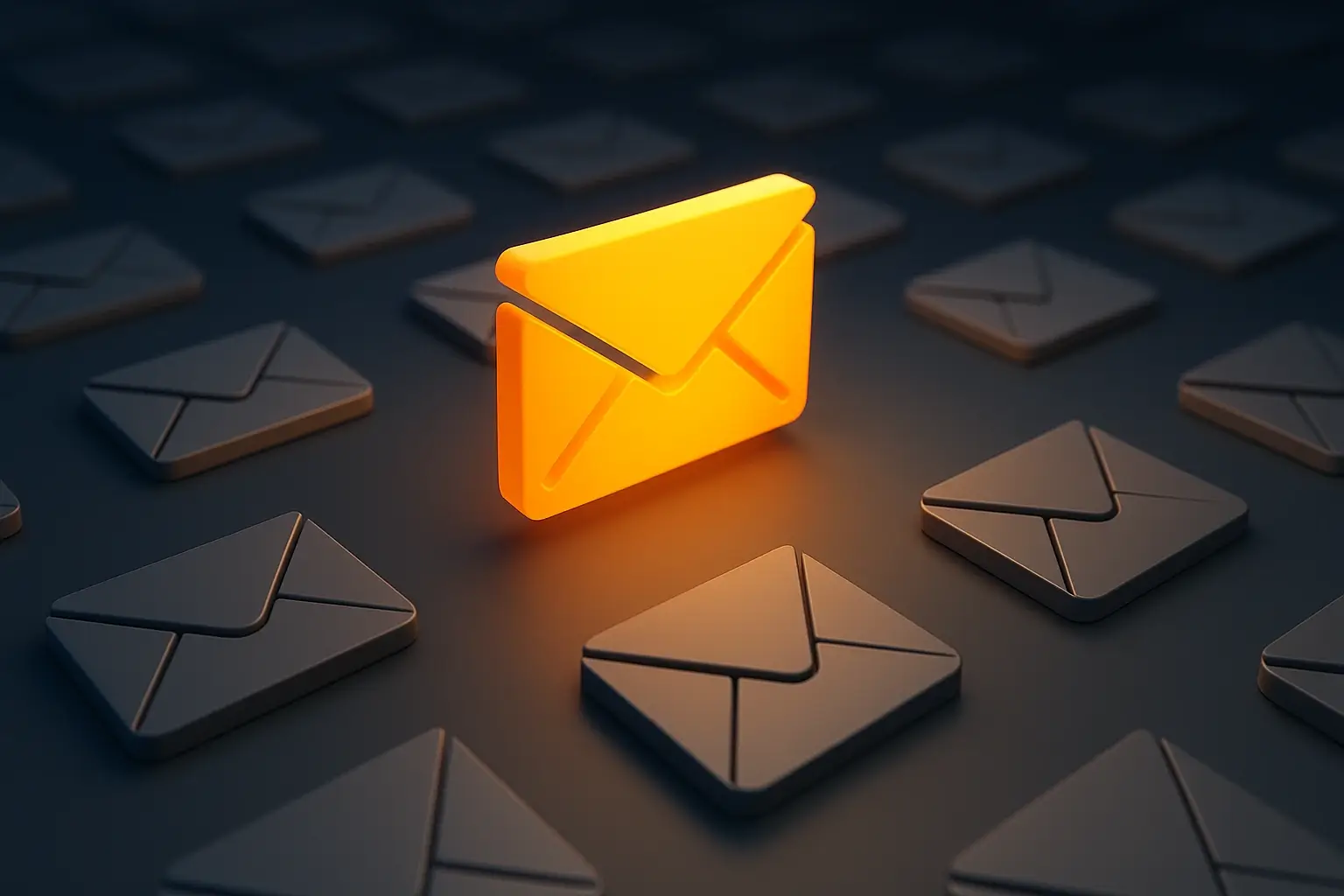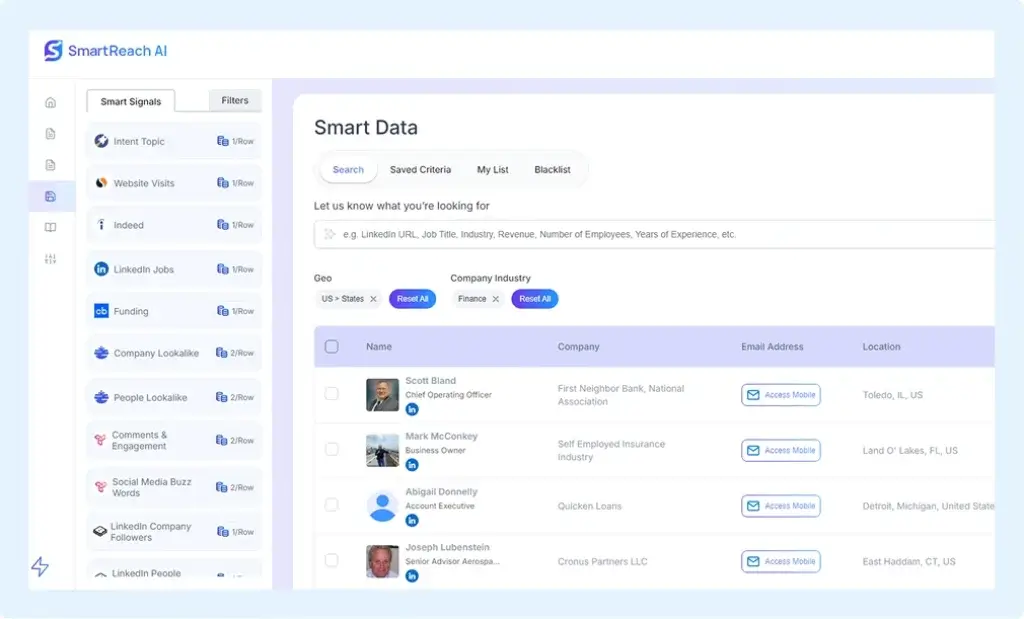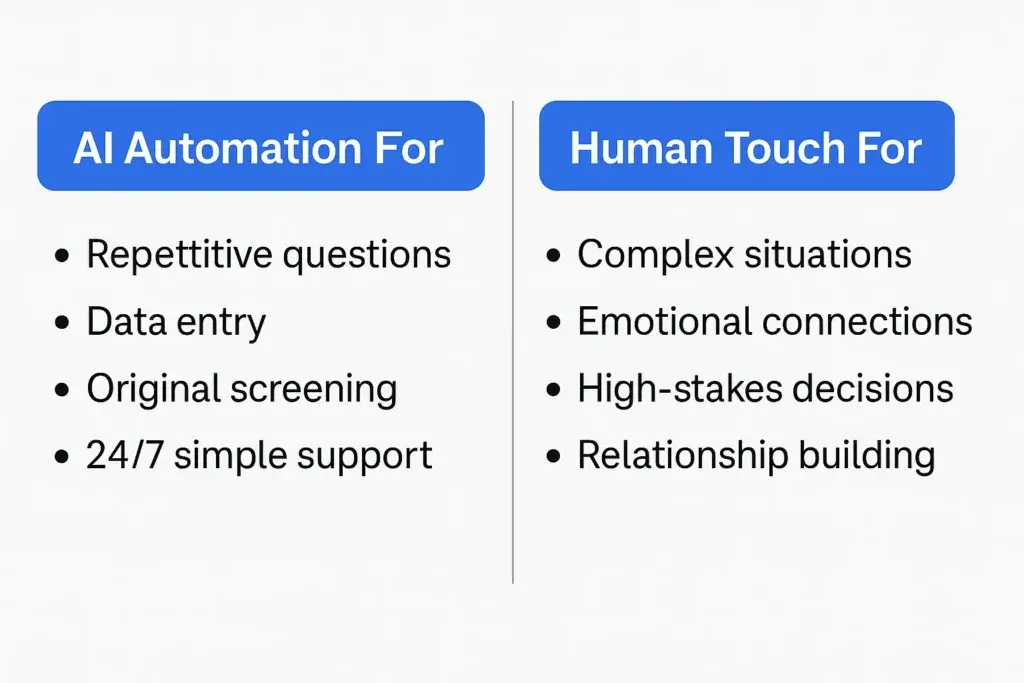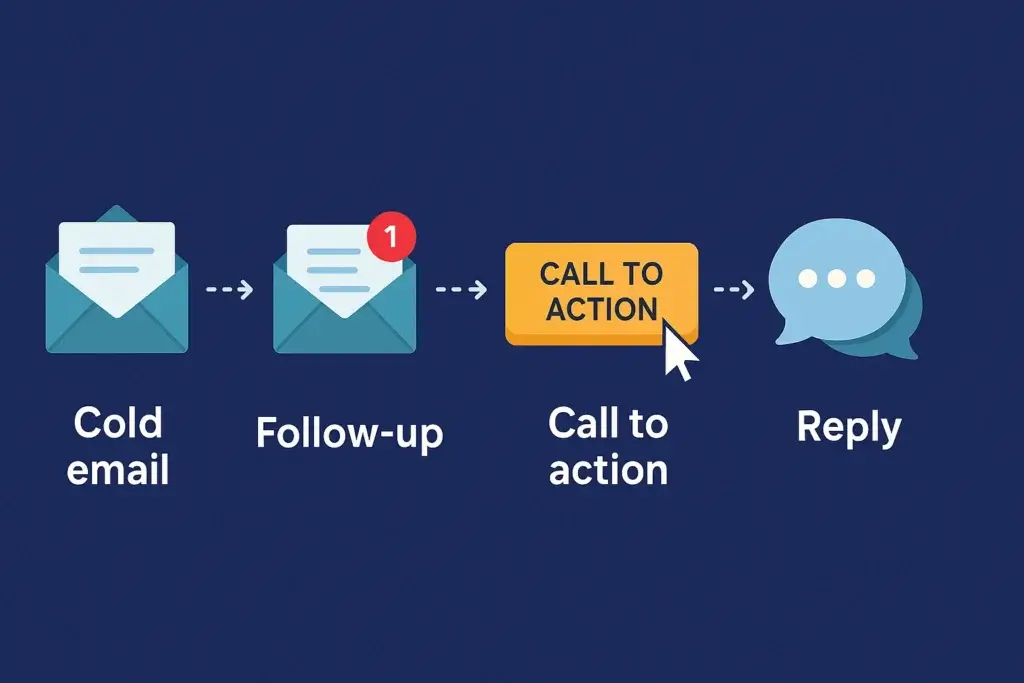
Introduction
Cold emailing can feel like shouting into the void, especially when you’re trying to connect with decision-makers, prospects, or potential partners who have overflowing inboxes. But when done right, cold emails can open doors to valuable conversations and high-converting leads.
Whether you’re in sales, marketing, or running a CRM-powered outreach campaign, the key lies in crafting emails that feel human, offer real value, and make it easy for the reader to say yes.
In this guide, you’ll learn:
-
How to write cold emails that actually get read and replied to
-
Best practices to avoid the spam folder
-
Proven templates you can personalize
-
Tools that simplify and scale your outreach
Let’s dive in.
What Is a Cold Email?
A cold email is an unsolicited message sent to someone you haven’t interacted with before, typically for sales, recruiting, or partnership purposes. But here’s the catch: the success of a cold email depends on how you write it, not just what you’re offering.
Unlike spam, cold emails should:
-
Be relevant to the recipient
-
Deliver personalized value
-
Include a clear and respectful call-to-action
In B2B CRM workflows, cold emails are a foundational part of lead generation. You’re not just sending messages at random. You’re building targeted campaigns with the help of tools like:
-
SmartReach.ai – for multi-channel outreach automation and reply detection
-
Apollo.io – for sales intelligence and contact enrichment
-
Hunter.io – for verifying email addresses and building lead lists
If your CRM includes cold outreach capabilities, make sure it’s integrated with tools like these to streamline your contact syncing, automate follow-ups, and track reply rates efficiently.
👉 Pro Tip: If you’re using a CRM like monday CRM or HubSpot, connect your outreach tools to your CRM to sync email activity and keep your sales pipeline up-to-date in real time.
Why Most Cold Emails Go Unanswered
Let’s be honest. Most cold emails get ignored. Not because cold outreach doesn’t work, but because the message simply isn’t worth replying to.
If you’re managing your outreach through a CRM or using AI tools, you already know how important reply rates and engagement metrics are. But improving those numbers starts with understanding what’s going wrong.
Here’s why your emails might be falling flat:
1. No Personalization
People can spot a copy-paste job from a mile away. If your email starts with “Hi there” or doesn’t mention anything specific about the recipient’s role, company, or recent work, you’re signaling that you didn’t do your homework. Personalization isn’t just nice to have. It’s the baseline expectation.
2. Weak or Boring Subject Lines
If your subject line doesn’t spark curiosity or signal value, it won’t get opened. Think of it as the headline of an ad. You have just a few words to earn a click.
Bad: “Let’s Connect”
Better: “Quick idea to improve your lead workflow”
3. Too Long or Confusing
A wall of text is a red flag. Your prospect doesn’t have time to sift through paragraphs to find the point. Short, direct emails work better. Ideally, under 120 words.
4. No Clear Value or CTA
If you’re asking for a call without explaining why it’s worth their time, you’re not likely to get a yes. Instead, offer something helpful or specific that they can say yes to.
5. No Follow-Up Strategy
The first email is rarely the one that gets the reply. If you’re not following up, you’re missing out. Studies show response rates can double or triple when you include 2–3 follow-ups spaced over several days. Many sales tools support this with built-in automation.
6. Poor Targeting
Even the best email won’t work if it’s sent to the wrong person. Leverage your CRM or tools like Apollo.io to segment and qualify leads before hitting send.

How to Write Cold Emails That Get Replies
Now that you know what kills most cold outreach, let’s flip the script. A great cold email isn’t about being clever or pushy. It’s about being clear, relevant, and easy to respond to.
This section walks you through the exact steps to write cold emails that get opened, read, and replied to. And yes, you can use this approach whether you’re doing manual outreach or scaling with tools like SmartReach.ai, Hunter.io, or your CRM.
1. Research Before You Write
Before you write a single line, ask yourself: Why should this person care? If you can’t answer that, you’re not ready to write.
Use LinkedIn, company websites, or tools like Apollo.io to uncover:
-
Their role and responsibilities
-
Recent product launches, funding, or growth milestones
-
Shared interests or mutual connections
Example:
Instead of: “I help companies like yours improve efficiency”
Try: “Saw you just hired 3 new SDRs, I’d love to show you how we helped a similar team cut onboarding time by 40%.”
2. Nail the Subject Line
Your subject line is the gatekeeper. If it doesn’t grab attention, the rest of your message doesn’t matter. You want curiosity, personalization, or immediate value.
Best Practices:
-
Keep it under 50 characters
-
Avoid ALL CAPS or spammy words (like “FREE” or “Act Now”)
-
Mention their company, role, or pain point if possible
Examples That Work:
-
“Quick idea for your sales pipeline”
-
“Saw your post about onboarding SDRs.”
-
“Question about [Company Name]’s growth plans”
3. Open with a Personalized Hook
Skip the small talk. Start with a specific, relevant observation that proves you’ve done your research.
Example:
“Congrats on the recent funding round. I imagine your sales team is growing fast. I had an idea that could support your new hires.”
This tells the reader: This isn’t a mass email. I’m speaking to you directly.
4. Deliver Clear, Immediate Value
Don’t sell features. Sell outcomes. Explain how you can help, and do it fast.
Structure to follow:
-
What do you do (1 sentence max)
-
How does it help people like them
-
Optional: a micro-case study or social proof
Example:
“We help SaaS companies like [Name] shorten their sales cycle using automated lead workflows. One client saw a 25% increase in qualified replies within 3 weeks.”
5. Keep It Short and Scannable
You’re not writing a novel. Aim for under 120 words and use short paragraphs or line breaks.
Why it matters: Long emails feel like work. Short emails feel like a conversation.
Avoid:
-
Jargon
-
Buzzwords
-
Lengthy introductions
Stick to:
-
One idea per line
-
Simple language
-
Bold statements backed by specifics
6. End with a Soft, Specific CTA
Too many cold emails end with: “Let me know if you’re interested.” That’s vague. Instead, ask for a clear, low-commitment next step.
Examples:
-
“Would you be open to a quick 15-minute call next week?”
-
“Can I send over a one-pager with details?”
-
“Would Tuesday or Thursday work better to connect?”
Keep it easy to say yes.
Tool Spotlight: SmartReach.ai
If you want to scale this process, SmartReach.ai makes it incredibly easy. It automates multi-step sequences, tracks replies, and even helps you handle “not interested” responses with built-in objection handling.
You can personalize at scale and get insights into which messages perform best, making your CRM and outreach stack a whole lot smarter.
Learn more in our SmartReach.ai review →

Cold Email Templates That Actually Work
Writing cold emails from scratch every time is inefficient. The real secret? Use proven frameworks that follow best practices, then personalize them based on your target.
Below are five cold email templates tailored for different use cases. Each one follows the structure we just covered: personalized hook, clear value, short format, and soft CTA.
1. B2B Sales Cold Email Template
Use Case: You’re offering a product or service to a potential buyer
Subject: Quick idea for [Company Name]’s [pain point]
Body:
Hi [First Name],
I noticed [specific detail about their company or role]. Congrats, it looks like your team is scaling fast.
I work with [your company name], where we help B2B teams like yours [quick benefit statement]. One of our clients recently reduced their sales cycle by 28% using our [product name].
Would you be open to a quick 15-minute call this week or next to see if this could work for you too?
Best,
[Your Name]
[LinkedIn or Website link]
2. Networking or Partnership Outreach
Use Case: Looking to collaborate or build a relationship
Subject: Exploring a possible partnership?
Body:
Hey [First Name],
Loved your [post/interview/project] on [topic]. I think there’s real overlap between what you’re doing at [Company] and the work we do at [Your Company].
I’d love to explore ways we could support each other, whether through content, co-marketing, or simply staying in touch.
Are you open to a quick intro chat sometime next week?
Cheers,
[Your Name]
3. Recruiting Outreach Template
Use Case: Cold emailing a candidate for a role
Subject: [First Name], are you open to new opportunities?
Body:
Hi [First Name],
I came across your profile and was really impressed by your background in [industry/skill]. Your work at [Current Company] stood out to me.
We’re currently hiring for a [Job Title] role at [Your Company], and I believe you’d be a great fit. Flexible hours, remote-friendly, and exciting work in [industry or mission].
Would you be open to a quick call to explore?
Best,
[Your Name]
[Job link or Careers page]
4. Media or PR Outreach
Use Case: Pitching your company or product to the media
Subject: Story idea: [Angle that aligns with journalist’s beat]
Body:
Hi [First Name],
I’ve been following your work on [topic], your recent piece on [article name] was especially sharp.
I wanted to share a story idea around [your unique angle]. Our team at [Company Name] just launched [new feature/product], and it’s seeing traction in [relevant niche].
If this sounds like something you’d consider, I’d be happy to send a short pitch or share data. Would that be helpful?
Thanks,
[Your Name]
5. Follow-Up Cold Email Template
Use Case: No reply after your first message
Subject: Just wanted to follow up, [First Name]
Body:
Hi [First Name],
Just circling back in case my previous email got buried. I know inboxes get crazy.
If now’s not the right time, no worries. But if you’re still interested in [repeat your value briefly], I’d love to chat or send over more info.
Would next week work for a quick call?
Thanks again,
[Your Name]
Best Practices to Improve Cold Email Success
Even with the right template, the execution of your cold email strategy is what makes the difference. Whether you’re sending 20 personalized messages or scaling outreach to thousands using tools like SmartReach AI, the fundamentals still apply.
Follow these cold email best practices to increase deliverability, reply rates, and overall success:
1. Use a Verified Email Domain
Before sending any cold emails, warm up your domain and use a custom email address (like you@yourcompany.com).
Unverified or brand-new email domains are more likely to get flagged by spam filters. Tools like Mailwarm or Lemwarm help warm up your domain over time.
2. Personalize at Scale
Even at high volumes, personalization is key. Use merge tags or custom variables to:
-
Mention the recipient’s company name or role
-
Reference a recent achievement or project
-
Tailor your value proposition to their specific needs
Look for tools that support deep personalization in outreach sequences. This helps you scale without sounding generic or robotic.
3. Optimize Your Send Time
Timing matters. Send your emails during business hours, ideally:
-
Tuesday to Thursday
-
Between 8–10 a.m. or 1–3 p.m. (recipient’s local time)
Most CRM-integrated outreach tools offer send-time optimization features. Use them to increase open rates.
4. A/B Test Subject Lines and Copy
Don’t guess what works, test it.
Run A/B tests on:
-
Subject lines
-
Opening sentences
-
Call-to-action variations
-
Email length
Tools like SmartReach.ai and Mailshake let you test variables across your outreach sequences and track results easily inside your CRM.
5. Keep It Human and Simple
Don’t try to impress with jargon or buzzwords. Your prospects are busy. Speak like a human:
-
Use short sentences
-
Avoid salesy language
-
Be clear about the benefit you’re offering
Example of what to avoid:
“We leverage cutting-edge solutions to synergize scalable pipeline opportunities.”
Say this instead:
“We help sales teams book more meetings by automating cold outreach.”
6. Include a Clear (and Compliant) Unsubscribe Option
Cold emails should always be compliant with regulations like CAN-SPAM, GDPR, or PECR, depending on your region.
Use a simple one-click opt-out link or add a line like:
“If this isn’t relevant, just reply ‘unsubscribe’ and I won’t reach out again.”
Deliverability tools will reward you for this. Your prospects will too.
7. Track Performance and Iterate
Use your CRM or outreach platform to monitor:
-
Open rates – are your subject lines working?
-
Reply rates – does your message resonate?
-
Bounce rates – is your contact list clean?
-
Meeting conversion – are replies leading to actual sales calls?
Improving cold email success is a process. Review weekly, test new ideas, and stay data-driven.
For more insights on how cold email strategies are evolving, check out this guide on shifting trends in cold outreach.

How to Measure Cold Email Success
Tracking your cold email performance is essential to improving results. Here’s a quick breakdown of the key metrics you should monitor inside your CRM or outreach tool.
| Metric | What It Tells You | Good Benchmark | Tips |
|---|---|---|---|
| Open Rate | Effectiveness of your subject lines and timing | 30–50% | Personalize subject lines, send mid-week during business hours |
| Reply Rate | How well your message resonates | 8–15% | Focus on value, test CTAs, keep it short |
| Bounce Rate | Quality of your email list | Under 2% | Use email verification tools like Hunter.io, or platforms with built-in validation features |
| Conversion Rate | Percentage of leads taking the desired action | Varies | Use clear CTAs, track using CRM or UTM links |
| Unsubscribe Rate | Audience fit and tone of your messaging | Under 1% | Keep your outreach relevant and respectful |
| Meeting Rate | Replies that convert to calls or demos | Track internally | Qualify leads and offer flexible scheduling |

Final Thoughts: Cold Emailing Is a Skill You Can Master
Writing cold emails that actually get replies isn’t about luck; it’s about strategy, structure, and genuine intent.
If you’re managing your outreach with a CRM or scaling with a sales prospecting platform, remember that your message still needs to feel personal, relevant, and respectful. Focus on helping, not selling.
Keep these takeaways in mind:
-
Do your research before hitting send
-
Personalize every email, even at scale
-
Use clear subject lines and soft CTAs
-
Test, track, and improve based on real data
When done right, cold emails can build powerful connections, grow your pipeline, and deliver results faster than you think.
FAQ
1. What is the ideal length for a cold email?
Keep it under 120 words. Aim for 3–5 short sentences that deliver value quickly and clearly.
2. How do I write a cold email subject line that gets opened?
Make it personal, curious, or value-driven. Keep it under 50 characters. Example: “Quick idea for your sales team.”
3. Should I personalize every cold email?
Yes. Even light personalization (name, company, role) significantly boosts reply rates and builds trust.
4. What’s a good open and reply rate for cold emails?
Open rates should hit 30–50%, and reply rates around 8–15%. Anything lower means you need to tweak your subject lines or message.
5. How soon should I follow up after the first email?
Wait 2–3 business days. Send 2–3 follow-ups max, each offering more value or context.
6. What tools help with cold email campaigns?
-
SmartReach.ai – multi-step email sequences, reply detection, analytics
-
Hunter.io – verify and find valid emails
-
Apollo.io – build lead lists and enrich contact data
7. Is cold emailing legal?
Yes, when done properly. Always follow GDPR, CAN-SPAM, and local email marketing laws. Include an opt-out.
8. What makes a good cold email CTA?
Keep it soft and specific. Example: “Would you be open to a quick call next week?”
9. How do I know if my cold emails are working?
Track open, reply, and conversion rates inside your CRM or outreach platform. Optimize based on what the data tells you.






